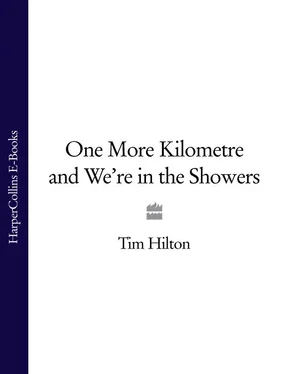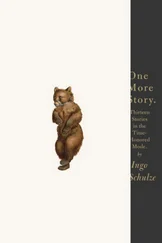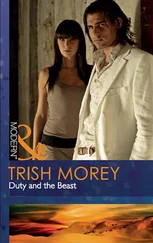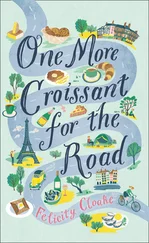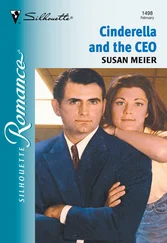Such a writer has never been born, so we must look elsewhere. No need to waste time with, for instance, the vile scribes of Les Temps modernes , except to say that French intellectuals have missed a wonderful subject that lay right before their eyes. Personally I prefer French journalists. They have more relish for life than academics. The vast majority of people who have added to our knowledge of the Tour have been from the press; but, alas, their accounts and interviews are mainly hidden in the archives of newspaper libraries. Many general books recount the history of the Tour, generally beginning with its origins in the press.
The Tour de France was founded in 1903 by Henri Desgrange, a racing cyclist (the first recordman de l’heure , with 35.325 kms) who was also a journalist. Desgrange had the idea of a very long race as a publicity vehicle for his paper L’Auto. It was in rivalry with Le Vélo , which organised the two longest cycling events of the time, Bordeaux – Paris and Paris – Brest – Paris. A race all the way around France, Desgrange thought, would give L’Auto an advantage over the other publication. The pattern of the Tour was established very early in its life. First, it was to be a circuit of the country. Second, there were to be long stages between different towns and cities. Third, the difficulty of the Tour would be augmented by climbs in the Alps and the Pyrenees. Mountain stages were an essential part of the race from 1910. The winner of the Tour – the person who rode back to Paris with the shortest aggregate time in a race that lasted for three weeks or more – would need to be a climber.
The development of the Tour de France was interrupted by the two world wars but enjoyed a ‘renaissance period’ between 1947 and 1953, the year of its golden jubilee. It is difficult to say when the ‘modern’ Tour de France began. Was it formed by commerce, or by publicity, or by globalisation, mondialisation? Did it begin with the rise of trade teams rather than regional or national teams, after 1961? Or with television coverage, which began in 1955 and was first transmitted en direct in 1957, and with the help of helicopters after 1975? Or with the failure of French cyclists in their own national event, for a Frenchman has not won since Bernard Hinault in 1985?
On another view, the ‘modern period’ belongs to riders who have won the Tour three times or more. There had been multiple winners before Hitler’s war, notably the Belgian Sylvère Maes (in 1936 and 1939), but the tendency to win again and again began in 1953. Here is a list of the dominating multiple winners:
Louison Bobet, 1953, 1954, 1955.
Jacques Anquetil, 1957, 1961, 1962, 1963, 1964.
Eddy Merckx, 1969, 1970, 1971, 1972, 1974.
Bernard Hinault, 1978, 1979, 1981, 1982, 1985.
Greg Lemond, 1986, 1989, 1990.
Miguel Indurain, 1991, 1992, 1993, 1994, 1995.
Lance Armstrong, 1999, 2000, 2001, 2002, 2003.
These seven men have achieved thirty-one victories between them.
In the years when the multiple champions did not take the Tour there were some equally memorable victors. On rare occasions they won because their team leader had crashed or had been taken ill. In 1966, for instance, Jacques Anquetil – suffering from bronchitis and, at the age of thirty-two, exhausted by a career that had begun in his teens – climbed off when there were only six stages left before Paris, having first ensured that the Tour would be gained by a modest teammate. Lucien Aimar saw his opportunity and took it, riding into the Parc des Princes in yellow, but without a single stage win to his credit.
Let no one imagine that Aimar was a cyclist of the second rank. It is true that he regarded Anquetil as a revered elder brother. Although they shared rooms for five years Aimar always addressed his team leader as vous. But Aimar was a vital presence and a potential winner in any race. In 1968 he won a stunning victory in the French national championship, beating Roger Pingeon, who had outdistanced him in that year’s Tour de France. Pingeon, like Aimar, could have won the Tour more than once. Both men had their victories and failures in the political team tactics of the Tour in the 1960s. Pingeon was the more calculating of the two. Aimar often said that he had the relaxed attitude of his homeland, the Cote d’azur, while Pingeon was reserved (he would not share a room with anyone) and a perfectionist. After 1968 his career and his spirits were destroyed by the rise of Eddy Merckx.
The most surprising winner of the Tour has been Roger Walkowiak, a miner’s son from the Polish enclave in Alsace. He rode the 1956 Tour as an unnoticed member of the Nord-Est-Centre regional team. When he finished in yellow there were no extended plaudits, though the Tour had been run at a record overall speed of 36.268 kph. Walkowiak gave his winnings to his old dad, raced intermittently for three more seasons and then went back home to a job in a factory. It is said that ‘Walko’ was a stupid man who lacked the will to dominate. In 1956 he was certainly directed by his team manager to get into the right breaks and then to take it easy. Would it have been better if he had gone for senseless adventures off the front of the bunch, and then lost the race?
Another unexpected winner was Joop Zoetemelk, who wore the yellow jersey on the Champs-Elysées in 1980. As a competitor, he was the superior of Aimar or Walkowiak. The reasons why people were surprised that he won were, first, because he was Dutch; second, because he was old (thirty-four); and, third, because they were used to him failing to win. Zoetemelk’s palmarès is in some ways unmatched. He started and finished no fewer than sixteen Tours and was second on six occasions. His long and admirable career was concluded when he won the world professional road race tide in 1985, at the age of thirty-eight. On the Giavera di Montello circuit he used finesse and then sheer speed to defeat Greg Lemond and Moreno Argentin.
That may well have been Zoetemelk’s favourite victory. ‘There are those who win the Tour once and then no longer speak about it,’ says Zoetemelk. ‘I was one of them.’ The Dutchman is also one of the sizeable number of former Tour heroes who become reclusive in later life. Some of them are very odd and anti-social. We hear of them living on a farm in a remote part of their native region, or in a forest, not much liking human contact, a gun-dog their preferred companion. Others, by contrast, make their living from former sporting renown. Old Belgian champions often own bars. The more renowned a cyclist, the more likely that he will enter the public relations business. French Tour veterans contribute to the vast, and still growing, hospitality industry that accompanies cycle sport. Or they drive team cars and supporting vehicles. Retired cyclists are better at this task than rally drivers or other professional motorists.
A select number of Tour winners become team managers. One of them is Bjarne Riis, the Dane who put an end to Miguel Indurain’s reign when he dominated him on an Alpine stage in 1996. I would rather not call him a great man of the Tour de France. The same applies to Marco Pantani. In 1998, a year in which he had already won the Giro d’Italia, Pantani flew up the roads of the Alps and the Pyrenees to become only the third man (after Fausto Coppi and Stephen Roche) to win both the Italian and French tours in the space of only a few months.
1998 was the year of the Festina drugs scandal, when it became clear that EPO was used throughout the peloton. Whatever the illegal fuel that helped him ride, Pantani was a climber in the grand tradition. After one day in the mountains he sprinted to the heights of Les Deux Alpes nine minutes clear of his nearest rival. He was never again to ride so well.
Читать дальше
